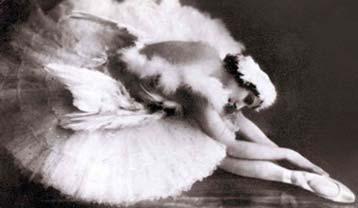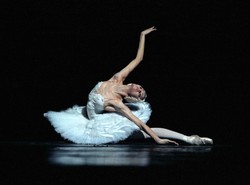 In the October 13, 2010 issue of The New Republic, dance critic Jennifer Homans queries, “Is Ballet Over?”
In the October 13, 2010 issue of The New Republic, dance critic Jennifer Homans queries, “Is Ballet Over?”
In her essay, Homans notes: “Ballet has always and above all contained the idea of human transformation, the conviction that human beings could remake themselves in another, more perfect or divine image. It is this mixture of established social forms and radical human potential which has given the art such range, and which accounts for its prominence in otherwise divergent political cultures.
 Today we no longer believe in ballet’s ideals. We are skeptical of elitism and skill, which seem to us exclusionary and divisive. Those privileged enough to obtain specialized training, so this thinking goes, should not be elevated above those with limited access to knowledge or art. We want to expand and include: we are all dancers now. Ballet’s fine manners and implicitly aristocratic airs, its white swans, regal splendor, and beautiful women on pointe (pedestals), seem woefully outmoded, the province of dead white men and society ladies in long-ago places.”
Today we no longer believe in ballet’s ideals. We are skeptical of elitism and skill, which seem to us exclusionary and divisive. Those privileged enough to obtain specialized training, so this thinking goes, should not be elevated above those with limited access to knowledge or art. We want to expand and include: we are all dancers now. Ballet’s fine manners and implicitly aristocratic airs, its white swans, regal splendor, and beautiful women on pointe (pedestals), seem woefully outmoded, the province of dead white men and society ladies in long-ago places.”
The editor of Dance Magazine, Wendy Perron, offers substantial push back in the form of a representative list of contemporary works that, while employing classical ballet vernacular, Perron asserts, connect well with audiences today.
Wendy’s list:
- Wheeldon’s After the Rain duet (originally the second half of a 2005 sextet for New York City Ballet) challenges the ballerina to dance—and float— with pristine simplicity. Wendy Whelan is a sylph for the 21st century who draws us into a hushed, celestial reverie. At least four other ballet companies have taken After the Rain into their reps, signaling that it is by now a classic.
- Jorma Elo’s Slice to Sharp (2006), also for NYCB, delivers a shock of delight to audiences. The eight dancers tear through big, wheeling lifts and scissor-sharp leaps at top speed, with a sprinkle of odd little mimed gestures. It’s exhilarating to watch.
- Wayne McGregor’s Chroma hit the public with the force of Balanchine’s Agon (1957) when it premiered at The Royal Ballet in 2006. It takes the long lines of ballet and pushes them to extremes, particularly during partnering, leaving you gasping at what’s possible. Talk about rigor and discipline!
- Ratmansky’s Seven Sonatas (2009) for American Ballet Theatre infuses the dancing of three couples with whiffs of romance. Exquisitely matched to the Scarlatti music, it touches us with hints of regret mingled with tenderness. Abundantly inventive, elegiac, and satisfying, it could be Ratmansky’s Dances at a Gathering.
- Back to Wheeldon: His In the Golden Hour (2008) for San Francisco Ballet is one of the most haunting ballets I’ve seen. It’s both melancholic and mesmerizing—the kind of ballet you want to see over and over.
- And, a landmark in contemporary ballet, Forsythe’s In the middle, somewhat elevated (1987), plays with the line between casual walking and full out, crash-landing dancing. With brazenly stretched legs, knotted spines, and otherworldly music by Thom Willems, the ballet sends us into a new, ultra contemporary planet of dance.
 Read Wendy Perron’s entire blog item here.
Read Wendy Perron’s entire blog item here.
If ballet’s not over, then “Black Swan,” Darren Aronofsky’s (“The Wrestler”) ghastly, weird, and woman-hating new ballet film must push it toward the edge of the cliff. I saw “Black Swan” this week, and it’s been nonstop inner turmoil trying to not be a twit and reject out of hand this ballet outsider’s tweaking of “Swan Lake.”
More on “Black Swan” to come.
- What do you think? Do Natalia Osipova and David Hallberg look dead or irrelevant to you dancing “Giselle”? See it here.

Re: After the Rain–It only takes 5 companies to present a new ballet within 5 years for it to be a “classic?” Seems like a premature judgment…
Look forward to your take on Black Swan. Aronofsky is a good director, and I liked Matthew Bourne’s remix of Swan Lake, so I’m curious to see what happens when they intersect.